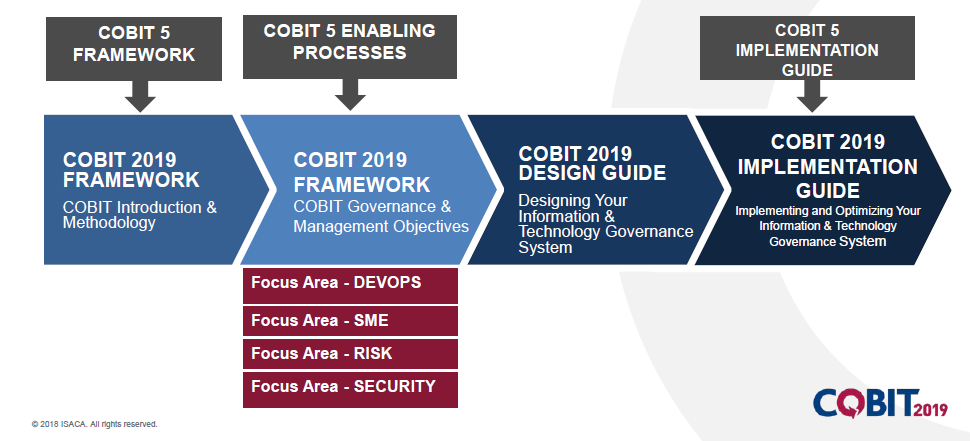COBIT® 5 vs COBIT® 2019 Courses
Differences between COBIT 5 and COBIT 2019 explained by iLEARN
COBIT® 2019 is an evolution of the previous version, COBIT 5, building on its solid foundation by adding the latest developments affecting enterprise information and technology. In addition to the updated framework, COBIT 2019 now offers more implementation resources, practical guidance and insights, as well as comprehensive training opportunities.
COBIT® 2019 offers greater flexibility and openness to enhances the currency and relevance of COBIT:
- The introduction of new concepts such as focus areas and design factors allow for additional guidance for tailoring a governance system to the enterprise’s needs
- Updated alignment to global standards, frameworks and best practices enhances the relevancy of COBIT
- An “open-source” model will allow the global governance community the ability to inform future updates by providing feedback, sharing applications and proposing enhancements to the framework and derivative products in real-time, with further COBIT evolutions released on a rolling basis.
- New guidance and tools support the development of a best-fit governance system, making COBIT® 2019 more prescriptive.
WHAT’S NEW?
- The Governance and Management Objectives concept
- 3 additional Management Objectives
- APO14 –Managed Data
- BAI11 –Managed Projects
- MEA04 –Managed Assurance
- The Focus Area concept, making COBIT flexible and more practical
- The Design Factor concept, allowing to build better tailored governance systems
- Process Capability Assessment based on the CMMI approach, process activites assigned a capability level
- The COBIT® 2019 Design Guide
WHAT HAS BEEN UPDATED?
- The Goals Cascade
- Process related guidance (practices and activities) for most processes
- Standards cross-referencing
- COBIT Implementation Guide has been updated to work in conjunction with the Design Guide
- The COBIT Reference Model now contains 40 governance management objectives [processes] instead of 37 processes in COBIT 5
- I&T Related Risk Scenarios
WHAT HAS BEEN REMOVED?
- Generic enabler model: similar structures will still be part of the COBIT conceptual model but will remain hidden and hence make COBIT look less complex.
- Enabler Guidance: it has been removed in order to get COBIT more simplified
- Process Goals: their role has been taken over by the process practice statements
- COBIT 5 PAM and ISO 15504: replaced by a CCMI inspired capability model
WHAT HAS BEEN CHANGED OR RENAMED?
- Enablers’ have been renamed ‘Components of the Governance System’, better expressing what they are
- The COBIT Principles for Governance Systems and for Governance Frameworks have been renamed and changed
- ‘IT Related Goals’ have been renamed to ‘Alignment Goals’
- The structure of the ‘process’ guidance, now structured as ‘Governance/Management Objectives’, with process guidance being (only) part of it, complemented with other governance components

 Login
Login